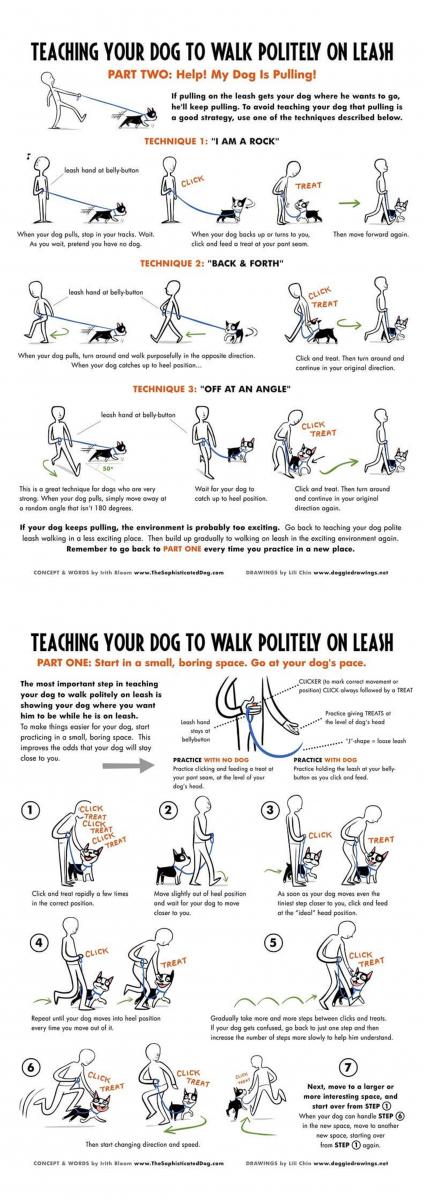Having a dog that walks with a loose lead is a highly sought-after behaviour from people but can often be a difficult one to train. Walking on a loose lead is not a natural behaviour for dogs, humans tend to walk slower than dogs do, which makes things a little boring.
Walking in a securely fitted ‘Y-shaped’ harness can be a good alternative to a martingale collar for some dogs, as there’s no pressure around their neck. Having your dog wearing a harness is recommended if you are using a long line for training recall, see the ‘Training your Greyhound to Recall’ resource.
The dog pulls on lead because they want to get somewhere and by following when they are pulling, we are reinforcing this pulling behaviour and it is likely to keep on happening. Instead, walking off at an angle or doing a U-turn and praising the dog when they walk back towards you is a better option rather than being dragged along. Please refer to the ‘Teaching your dog to walk politely on leash, part one and two” resources.
Walking in a formal heel position on your left hand side is quite boring, and letting them investigate all the different smells and sights in nature at their own pace, provided it is on a loose lead, will provide a far more enriching and enjoyable experience for the both of you.
Important things to remember are first practicing in a low distraction environment, like the living room, then the back yard, then low distraction environments in public (like a quiet park). Just like us, dogs find it easier to learn something for the first time without distractions.
Make sure you have tasty treats, though your hound may be unwilling to eat out in public, refer to ‘Fear and anxiety – signs and what to do’ resource. If they won’t eat you can still reward with gentle praise and pats or letting them following their sniffing trail as a ‘real-life reward’.

